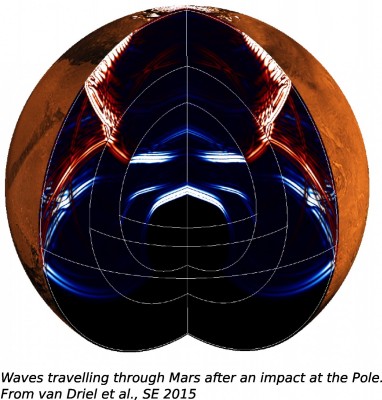
Creating 1 Hz-seismograms in a 3-D Earth model, and comparing them to observed body waves, is a dream that’s today still too expensive for routine use. But even tackling the problem for a spherically symmetric Earth poses certain challenges. Recently, a new tool entered the stage (you might have followed the Solid Earth discussion): Instaseis allows users to extract seismograms for a spherically symmetric Earth within milliseconds in a convenient Python / Obspy environment.
The idea is simple. Thanks to spherical symmetry and Green’s function reciprocity, a ‘one source fits all’ approach can be taken: A database for a source at the surface and a spherically symmetric model like PREM is computed and stored at each single element of the computational mesh, to a given depth. With this database, a source and a receiver location, any seismogram recorded at Earth’s surface can be synthesized within milliseconds. As long as receiver depth doesn’t change, there is no need to recalculate the database. Interchange ‘source’ and ‘receiver’ for the opposite case.
‘It’s not a 1-D Earth!’, moan the critics. This is true, and it is hard to imagine how a similar tool could ever include 3-D structure. However, there are plenty of questions one can pose and tests one can run, which 3-D models, do to sheer computational effort, preclude. Mars seismograms, testing the plausibility of a multitude of possible Mars interiors, are one very cool future use of instaseis within the InSight mission. Others include shakemovies, ambient noise synthetics, finite source inversions, matched filters, and education…
As one can imagine, the high frequency wave field database quickly reaches unwieldy storage sizes. A promising future development in this regard would be the hosting of such databases on an IRIS server, which is planned but not implemented yet – stay tuned.
